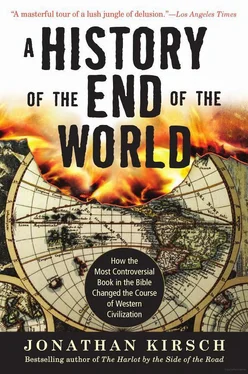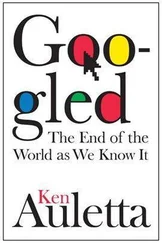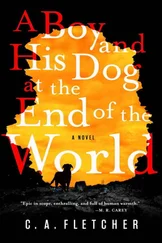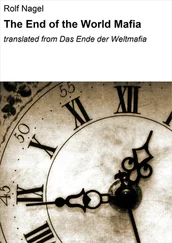The decoupling of God and the end-times in politics and popular culture was complete by the mid-1960s, and it was even possible to regard the end of the world as an appropriate object of gallows humor. On the Beach, released in 1959 and set in 1964, contemplates the end of the world with utter despair. By 1964, of course, the world was still intact, and when Stanley Kubrick took a second look at the same scenario, he saw it as a laughing matter. The world ends once and for all in Dr. Strangelove, or How I Learned to Stop Worrying and Love the Bomb, but now it is the occasion for the blackest of black comedies.
Human failings alone are once again to blame in Dr. Strangelove. A rogue U.S. Air Force general launches a nuclear strike on the Soviet Union in the mad hope of convincing the president to order a full-scale attack. “Well, boys, I reckon this is it,” says one of the B-52 pilots as he trades his helmet for a battered cowboy hat. But it turns out that the Soviets have secretly deployed a “doomsday device” that is programmed to respond to an American attack by detonating a mammoth cache of thermonuclear explosives and thereby creating “a doomsday shroud”—“a lethal cloud of radioactivity which will encircle the earth for ninety-three years” and “destroy all human and animal life.” If a single bomb falls on Soviet soil, the world will be inevitably and irretrievably destroyed.
Kubrick and his collaborators on Dr. Strangelove do not mention God or the Devil at all, but they may have been mindful of the end-time scenario of Revelation when they devised the final scene of the movie. Faced with the utter destruction of humankind, the demented scientific genius called Dr. Strangelove holds out the bright hope of a New Heaven and a New Earth. A few hundred thousand men and women—“a nucleus of human specimens”—can be sheltered “at the bottom of some of our deeper mine shafts” for a century or so. Men would be selected for their potency and women for their sexual allure. Like the ancient readers of Revelation who imagined the millennial kingdom as an era of abundance, the postnuclear New Earth would be a sensual paradise for those who survived to see it.
“Naturally, they would breed prodigiously,” explains Dr. Strangelove. “But with the proper breeding techniques and a ratio of, say, ten females to each male, I would guess that they could then work back to the present gross national production within, say, twenty years.” And when the survivors finally emerge from the abyss, the men and women who had been judged worthy to live in the New Earth will be ready for the brave new world that they will find on the surface: “The prevailing emotion will be one of nostalgia for those left behind,” he concludes, “combined with a spirit of bold curiosity for the adventure ahead.” 9
At precisely the moment of greatest optimism, however, a single American aircraft reaches its target in the Soviet Union, the doomsday device is triggered, and the atmosphere is suddenly filled with a series of mushroom-shaped clouds, the iconic image of the atomic age. Like On the Beach —and, again, quite unlike the other books and movies in the apocalyptic genre— Dr. Strangelove ends with no hope of human survival. “We’ll meet again, don’t know where, don’t know when,” goes the song that plays beneath the final fugue of thermonuclear detonations. The song would be an appropriate soundtrack to the book of Revelation, but now the words are purely and bitterly ironic.
Not everyone in America in the postwar era, however, shared the secular and cynical outlook that characterizes Dr. Strangelove. For a great many men and women, the comforting certainties of old-time religion—including the end of the world as it is depicted in the premillennialist reading of Revelation—remained very much alive. Indeed, two different and contesting apocalyptic ideas coexist in America, one based on science and the other based on religion. For the religious true believer, the prospect that the world might end in a nuclear conflagration is perfectly consistent with the belief that God, rather than humankind, will be its author.
“Some day we may blow ourselves up with all the bombs, [b]ut I still believe that God’s going to be in control,” declared the Reverend Charles Jones, pastor of a Baptist church in Amarillo, Texas, whose congregants included many of the men and women who worked at the nearby Pantex hydrogen-bomb assembly plant. “If He chooses to use nuclear war, then who am I to argue with that?” 10
Christian fundamentalism, in fact, produced its own pop-culture version of the Apocalypse, including books, movies, comics, posters, and miscellaneous items of inspirational merchandise. The true believer might buy and wear a “Rapture watch” whose face carried a message to remind the wearer that the end is nigh—“One hour nearer the Lord’s return”—or display a dashboard plaque that was meant to alert passengers that the driver might be “raptured” to heaven at any moment: “If you hear a trumpet, grab the wheel.” 11
Visions of what will happen when Christians are suddenly removed to heaven might be horrific—“bursting graves, crashing planes, and cars careening out of control”—or rhapsodic. “In one Rapture painting,” writes Paul Boyer, “the lawnmower-pushing suburban husband gapes in wonder as his aproned wife soars over the clothesline to meet Jesus.” 12And the modern counterpart of a medieval best seller like Fifteen Signs of Doomsday was a handbook titled How to Recognize the Antichrist.
Youngsters in fundamentalist households were reared from early childhood in constant and urgent anticipation of the end of the world. “Many who were raised as premillennialists can tell horror stories,” explains Timothy P. Weber, “about coming home to empty houses or finding themselves suddenly alone in department stores or supermarkets and instinctively concluding that Jesus has come and left them behind.” 13And novelist Rhoda Huffey, whose mother and father were both Pentecostal preachers, recalls the mind-set of an anxious eleven-year-old girl growing up with the conviction that she would be left behind when her parents were raptured to heaven:
“If the Christians had left, there was still one more way, which involved chopping off your head,” writes Huffey in her semiautobiographical novel, The Hallelujah Side. “This was in Revelation, the horrible book. The Anti-christ rode up on his dark horse to brand your forehead with the Mark of the Beast, 666. If you refused, he cut off your head with a hatchet and you went to heaven immediately. So there was nothing to be afraid of.” 14
But the apocalyptic subculture was not confined to sermons, tracts, and comic books, however colorful and imaginative. Like the Millerites, who made good use of the latest high-speed printing presses in the mid–nineteenth century, the doomsayers of the twentieth century were quick to embrace the latest technologies of mass communications. As early as 1936, for example, one enthusiastic preacher pondered the famous prophecy in Revelation—“Behold, he cometh with the clouds; and every eye shall see him” 15—and then offered his own explanation of what the biblical author really means to say: “In the past we had to fall back on the explanation that it does not necessarily mean that all should see the Lord coming in the clouds of heaven at the same time,” the preacher explained, “but now we know that by Television, that beatific sight can be seen the world over at one and the same moment.” 16
Some of the very first programs to be broadcast over the newfangled invention called radio were devoted to old-time religion. The Moody Bible Institute, for example, started broadcasting in the early 1930s over its own powerful radio station, and a hard-preaching radio show called the Old-Fashioned Revival Hour, originating in Long Beach, California, was heard over some 450 stations across the United States by the 1940s. Even the CBS radio network carried a weekly program on religion hosted by Donald Grey Barnhouse (1895–1960), the editor of an apocalyptic magazine titled Revelation. “If atomic bombs fall upon our cities,” declared Barnhouse, “we shall be in heaven the next second.” 17
Читать дальше










